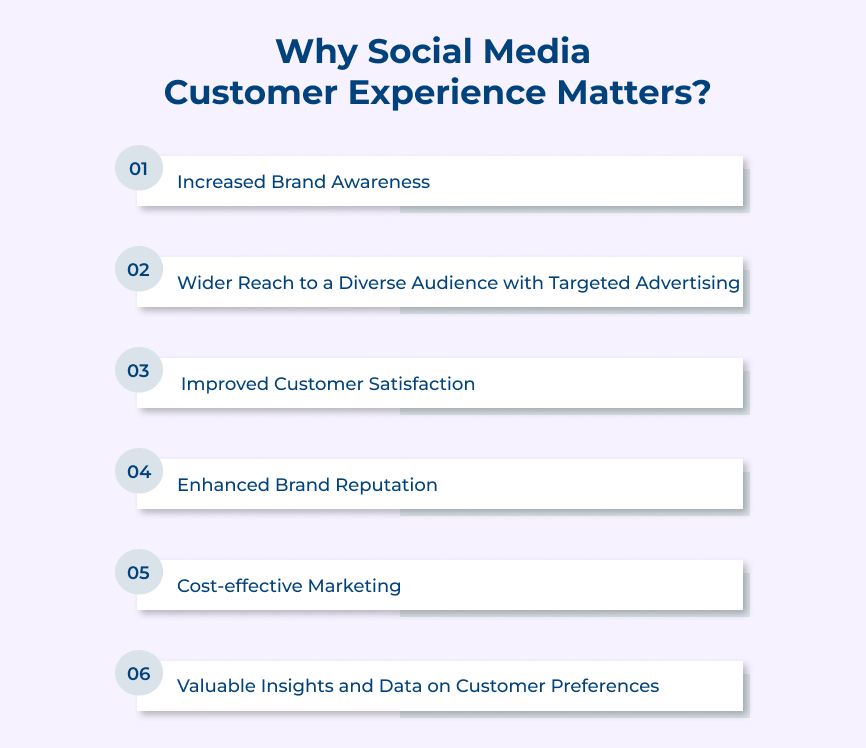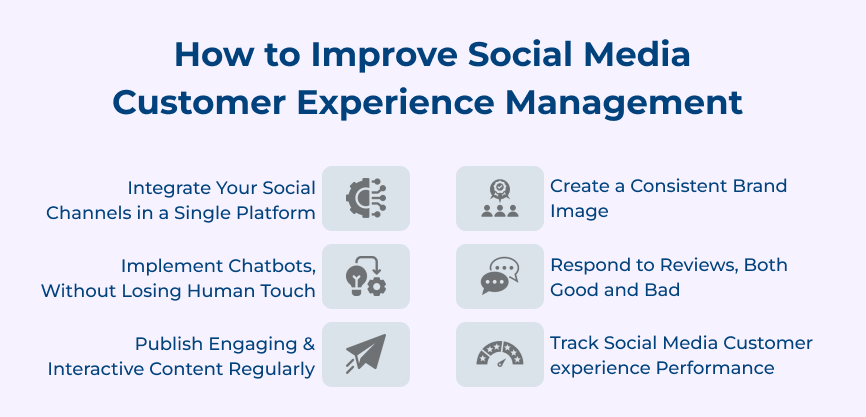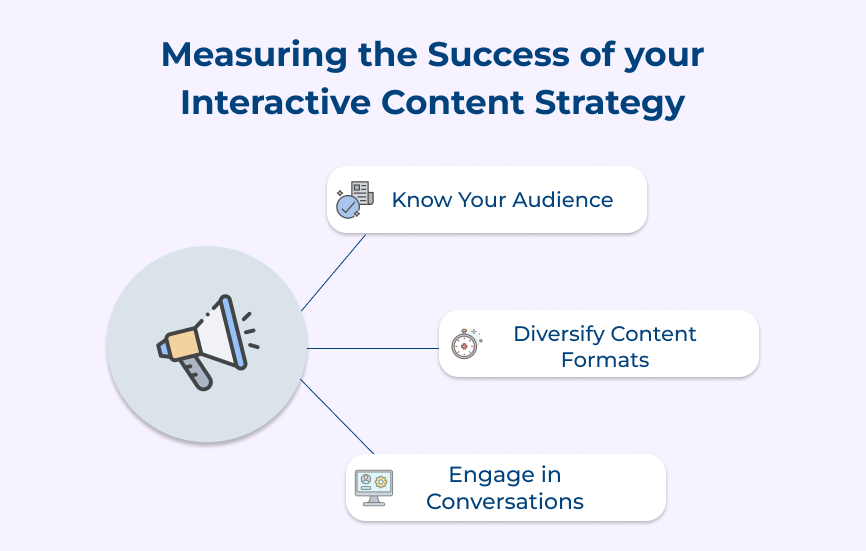Best Practices:
- Know your audience: Conduct audience research to understand the target demographic’s interests, pain points, and preferences. Tailor the content to address their needs and align with their interests.
- Diversify content formats: Experiment with different content formats, including videos, infographics, and user-generated content. Variety keeps the audience engaged and provides a fresh perspective on your brand.
- Engage in conversations: Encourage two-way communication with your audience. Respond to comments, questions, and feedback promptly. Engaging with the audience builds trust and facilitates a sense of community.
4. Create a Consistent Brand Image
Consistency is key when it comes to building a strong brand image. Your brand’s messaging should be consistent across all social media channels and in any other marketing materials. It means using the same logo, color scheme, font and tone of voice across all channels.
Your social media posts should reflect your brand’s values along with your audience’s interests. Responding to customer queries/complaints in a timely and professional manner can help build a positive brand image.
Best Practices:
- Develop brand guidelines: Create clear brand guidelines that outline your brand’s visual identity, tone of voice, and messaging. Share the guidelines with your team to ensure consistency.
- Monitor brand mentions: Use social media monitoring tools to track brand mentions and customer sentiment. Address negative mentions professionally and promptly to mitigate potential damage to your brand image.
- Train your team: Provide training to your social media team on brand guidelines and customer service best practices. Ensure that all team members understand the importance of consistent brand representation in customer interactions.
5. Respond to Reviews, Both Good and Bad
Customer reviews are a valuable source of insights on social media. They provide businesses with direct feedback from the customers, highlighting areas of strength and opportunities for improvement. Responding to these reviews, whether they are positive or negative, is a crucial aspect of social customer experience management.
The customer-centric approach demonstrates that the business values customer feedback and is committed to addressing concerns. In the case of negative reviews, responding empathetically and providing solutions not only helps in retaining the customer but also showcases a proactive approach to problem-solving.
Best Practices:
- Timely responses: Aim to respond to reviews promptly, ideally within 24 to 48 hours. Swift responses will always show that you prioritize customer feedback.
- Personalization: Tailor your responses to each review. Address the customer by name, reference specifics from their review, and offer personalized solutions or thanks.
- Constructive engagement: Maintain a positive and empathetic tone while handling negative reviews. Apologize for any inconvenience caused, provide solutions or next steps, and invite the customer to contact you privately for further assistance if needed.
6. Drive Social Engagement with User Generated Content
User-generated content (UGC) is a potent tool for driving social media engagement. It encompasses content created by customers which can take various forms like reviews, photos, videos, or social media posts.
UGC is influential because it carries authenticity, and customers who interact with UGC are more likely to convert. Encouraging customers to generate content related to your brand can boost brand loyalty and facilitate a sense of community.
Best Practices:
- UGC campaigns: Create campaigns or contests that inspire customers to generate content related to your products or services. Offer incentives such as discounts, recognition, or prizes to encourage participation.
- Showcase UGC: Share user-generated content on your social media channels, giving credit to the creators. Celebrate your customers by highlighting their experiences with your brand.
- Engage and thank: When customers contribute to UGC you must engage with their content by liking, commenting, or sharing. Show appreciation by thanking them for their valuable contributions to your brand’s story.
7. Track Social Media Customer Experience Performance
Tracking social media customer experience (CX) performance is a foundational step in enhancing your CX management on social media platforms. It entails monitoring while also assessing various metrics and data points to gain insights into the effectiveness of your current strategies and customer interactions.
Comprehensively understanding the existing performance allows businesses to identify areas that require improvement. It also helps in refining the approach and delivering a more valuable experience to your social media audience.
Best Practices:
- Define relevant metrics: Begin by defining the specific social media metrics that align with your CX goals. The metrics may include engagement rates, response times, click-through rates (CTR), etc.
- Regular monitoring: Implement a consistent monitoring schedule to track the selected metrics. Regularity is key to identifying trends and patterns in your social media performance.
- Benchmark against goals: Establish clear CX goals and benchmarks to measure your performance against. Are you aiming to improve response times? Increase positive sentiment? Boost customer engagement? These goals should be specific, measurable, achievable, relevant, and time-bound (SMART).
Do’s and Don’ts of Using Social Media for Effective Customer Experience
Though social media has become a powerful platform to expand your CX outreach, there are some do’s and don’ts that brands should keep in mind when using social media for customer experience.
Do’s
- Do respond promptly to customer inquiries and complaints.
- Do personalize your responses to make customers feel heard and valued.
- Do create valuable and engaging content that resonates with your target audience.
- Do monitor online conversations to stay aware of customer sentiment and feedback.
- Do show gratitude to loyal customers and advocates who promote your brand on social media.
Don’ts
- Don’t ignore customer complaints or negative feedback.
- Don’t automate responses or use generic templates that feel impersonal.
- Don’t engage in online arguments or respond defensively to negative comments.
- Don’t over-promote your products or services to the point of overwhelming your followers.
- Don’t forget about the human touch and the importance of face-to-face interaction with customers.
Social Media CX is The Future of Conversational Customer Experience
Social media has revolutionized the way brands communicate with their customers. There are 5.04 billion people active on social media platforms including Facebook, Instagram, Twitter, etc. It provides brands with an incredible opportunity to connect with their audience on a more targeted level.
Integrating social media into the customer experience strategy allows brands to provide faster/more convenient support, but also improve customer satisfaction, loyalty, and advocacy. Social media continues to develop at a rapid pace so brands must adapt and embrace the power of socially driven CX strategies to stay competitive in the digital age.














